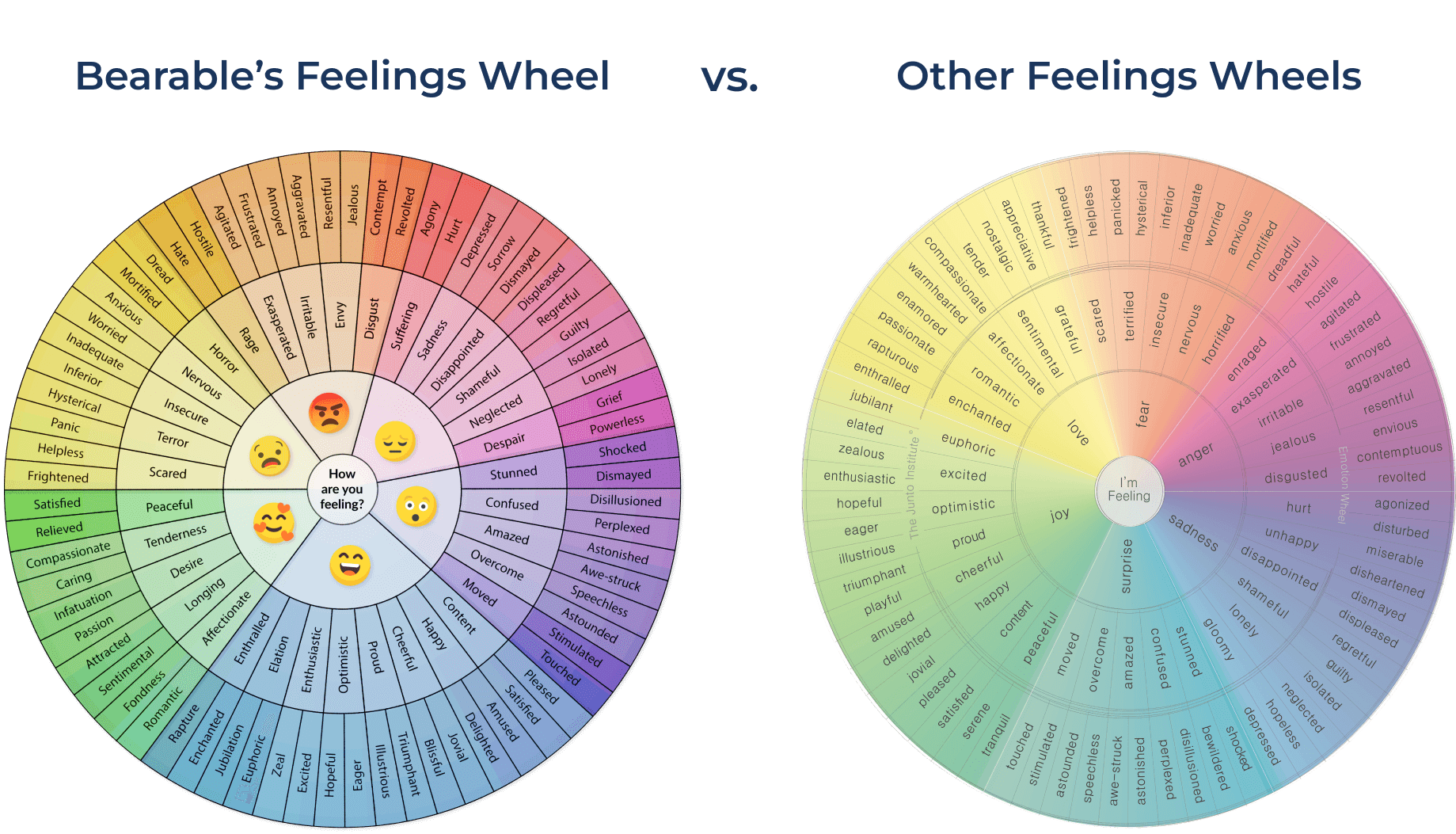Identifying your feelings can be incredibly helpful. In fact, labelling your emotions has been shown to help reduce their intensity. But it’s not always easy to pinpoint and communicate exactly what you’re feeling. A feelings wheel is a simple, visual way to help you to overcome this problem.
Start with the basics: Think about how you’re feeling broadly. Are you happy, sad, angry, or something else? Find that basic emotion on the wheel using the emojis in the center.
Get more specific: Once you have the basic emotion, look at the more detailed feelings that branch out from it. If you’re feeling sad, are you more disappointed or neglected?
There’s more to a feelings wheel than just labelling your emotions. Identifying your specific emotions and moods is just the start of improving how you communicate and manage your feelings.
Express Yourself. Use the words from the wheel to communicate your feelings. You can write them down, talk to someone about them, or even just acknowledge them for yourself.
💡 In fact, labelling your emotions has even been proven to help reduce the intensity with which you feel them.
Make It a Habit. The more you use the wheel, the better you’ll get at understanding and communicating your emotions. Try checking in with it daily or after big life events.
Use It in Conversations. When talking to others about your feelings – like a Doctor or Therapist – the feelings wheel can help you explain things more clearly. With friends and family, it can also make emotional conversations easier and more productive.
Manage Your Emotions. By regularly identifying your feelings, you’ll get better at handling them. Notice patterns in your emotions and come up with ways to manage triggers for difficult feelings.
Once you’ve been able to identify your feelings, it can also be helpful to track them. We’ve created a free Mood tracker worksheet (PDF) so that you can keep track of how you’re feeling, spot patterns, and manage your moods.
1. Understand and Manage Your Emotions. Keeping tabs on your emotions helps you understand your feelings more deeply, spot patterns and triggers, and figure out ways to keep them in check and stay balanced.
2. Boost Your Mental Health and Communication. Tracking your emotions can help you notice early signs of anxiety or depression, get help sooner, and communicate more clearly with others, improving relationships.
3. Stay Motivated and Encouraged. Seeing positive changes in your emotional patterns can be super motivating and encouraging, keeping you on track with your efforts to feel better.
What’s unique about our feelings wheel? We’re glad you asked. We created our own version of the Feelings Wheel because we’d struggled to use the other ones available online. Our feelings wheel aims to make it easier to:
That said, we’re still looking into ways to further improve the feelings wheel by including more and more familiar emotions. If you have any suggestions let us know by contacting jesse@bearable.app

If the download doesn’t happen automatically, you can follow the instructions below:
1. Click the download button at the top of this page.
2. You’ll be redirected to a folder on Google Drive.
3. Click on the ‘Symptom Tracker Worksheets’ folder.
4. Then tap the download arrow in the top-right-hand corner of the screen.
5. Once you’ve downloaded the file, double-click it to unzip the folder and view your PDF worksheet templates.
Note. If you’re on a mobile device, you might need to use an app to open the .zip folder after you download it.
Because Bearable is a company founded at operated by people with chronic health conditions for people with chronic health conditions. AND even though our app is the number one symptom tracker in the USA and UK (that you can also use for free). We try to create as many free resources as possible for people who need some help managing their health.
You can check out some of our other free resources using the links below.
We couldn’t do this without you. So if you have an idea for a helpful free resource, let us know by getting in touch with jesse@bearable.app